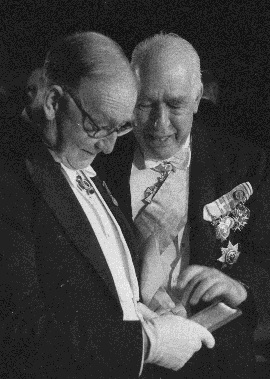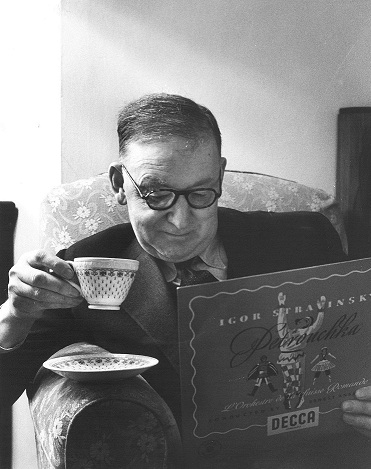Sir John Cockcroft – the man behind the science
The life and legacy of Sir John Cockcroft, the great physicist who was famously involved in the so-called “splitting” of the atom, will be celebrated in a seminar at St John’s College, Cambridge next month.
Organised by his son, Christopher, and featuring speakers including eminent scientists, historians and former colleagues, the event will be held over two days starting on September 18, the anniversary of Cockcroft’s death in 1967.
Its aim is both to stimulate a revival in awareness of the achievements of a man whose work helped to shape the modern age, and to bring to light some of the common threads and personal characteristics which defined his remarkably rich and wide-ranging life and career.
Cockcroft, who was both a student and Fellow at St John’s, is perhaps best known for the pioneering 1932 experiment in which he and his fellow researcher, Ernest Walton, transformed the nucleus of a lithium atom by bombarding it with high-energy particles. This feat, which was somewhat inaccurately dubbed the “splitting” of the atom, provided the basis for nuclear fission.
Over the course of his career, he oversaw further developments which enabled the emergence of the nuclear power industry, acted as a scientific adviser to Prime Ministers and policy-makers, and became a hugely respected teacher and educationalist both in Cambridge and elsewhere.
 Yet his legacy, which among other things includes the giant particle accelerators now used for similarly age-defining research at CERN, is often overlooked. The 75th anniversary of Cockcroft’s famous atomic experiment in 2007, for example, passed by virtually unnoticed.
Yet his legacy, which among other things includes the giant particle accelerators now used for similarly age-defining research at CERN, is often overlooked. The 75th anniversary of Cockcroft’s famous atomic experiment in 2007, for example, passed by virtually unnoticed.
The fading of Cockcroft’s legacy from public view is partly a consequence of his links to the controversial field of nuclear power, coupled with the understated manner in which he went about his work.
“He wasn’t an up-front leadership figure who made it seem everything was happening because of him,” Christopher Cockcroft said. “He was immensely respected by scientists, industrialists and politicians all around the world, but he was more of a background leader.”
“He seems to have taken the view that if he wasn’t in the public eye, he could move in places that other people could not. He was trusted, and a natural networker who made contacts that endured. That seems to have been a pattern everywhere that he went and worked.”
As well as the “splitting” of the atom, the seminar will cover Cockcroft’s work in World War II, when he was instrumental in the development of army radar systems, among other things setting up stations in Shetland and Fair Isle amid gales and snow, and being a key member of the vital ‘Tizard Mission’ to the USA which sought scientific and industrial assistance for key war projects. There will also be papers on his leadership of the Canadian Atomic Energy project, and his role as the first Director of the UK’s Atomic Energy Research Establishment (AERE) at Harwell, which undertook pioneering fission and fusion research in the post-war age.
The seminar will also look beyond his scientific achievements. For six years during the 1930s – while he was doing some of his most important work – Cockcroft also somehow found time to be Junior Bursar at St John’s, a post in which he took charge of the domestic administration of the College and oversaw the initial construction of two new Courts as the College expanded. He then became the first Master of Churchill College, when it opened in 1959.
 Other papers will examine the ways in which science has been transformed by the work he did, in particular nuclear physics and sub-atomic particle acceleration. In 1949, Cockcroft was in charge of the construction of the first post-war proton accelerator at AERE. Today, there are an estimated 26,000 particle accelerators around the world being used for radiotherapy, industrial processing, biomedicine and fundamental research into the atomic particles of which our world is made.
Other papers will examine the ways in which science has been transformed by the work he did, in particular nuclear physics and sub-atomic particle acceleration. In 1949, Cockcroft was in charge of the construction of the first post-war proton accelerator at AERE. Today, there are an estimated 26,000 particle accelerators around the world being used for radiotherapy, industrial processing, biomedicine and fundamental research into the atomic particles of which our world is made.
Christopher Cockcroft added: “My father was a strong proponent of particle research in the late 1940s and, realising that no one country could afford the research facilities needed, was involved with the foundation of CERN, persuading John Adams to go there; since then CERN has been a leader in the development of giant accelerators, the latest being the Large Hadron Collider.”
“This is an example of the legacy of the original science that he did, the things that he was involved with have led to explosions of knowledge and research in certain areas, and they started with these attempts to open up avenues then unknown.”